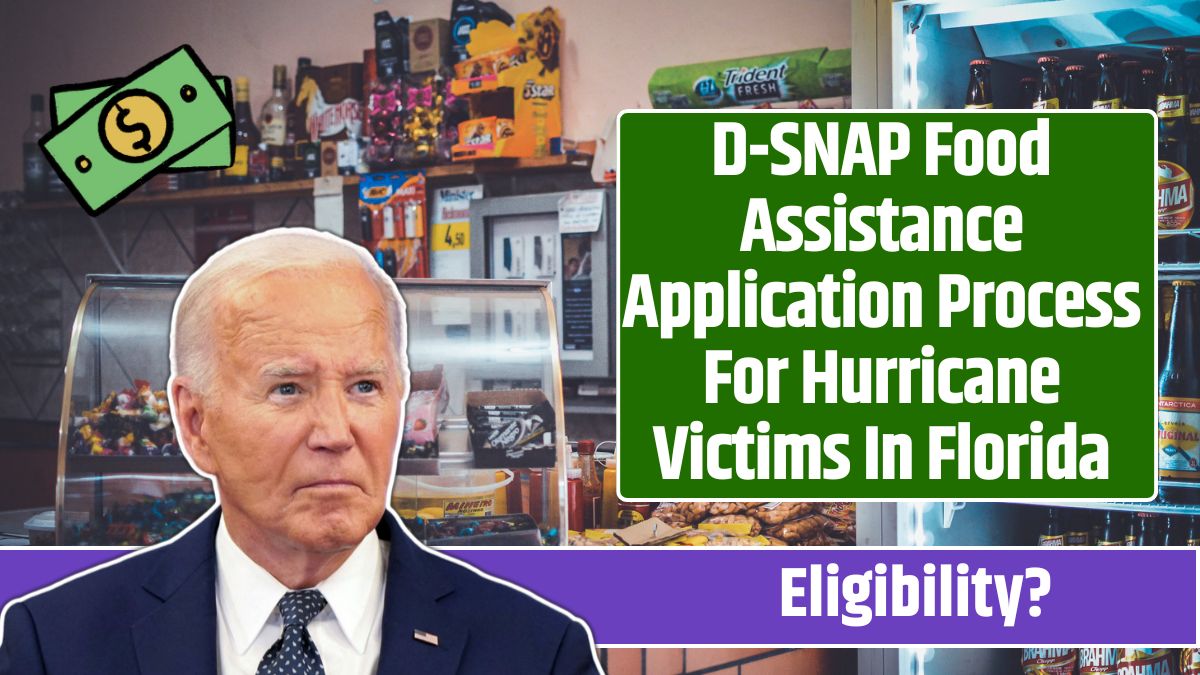Over 400,000 residents of Florida impacted by the recent hurricanes, Helene and Milton, are now eligible for food assistance through the Disaster Supplemental Nutrition Assistance Program (D-SNAP).
This emergency relief program, announced by the U.S. Department of Agriculture (USDA), will support around 407,733 families across 24 counties in Florida that have suffered severe losses due to the devastating storms.
What is D-SNAP?
D-SNAP is an extension of the regular Supplemental Nutrition Assistance Program (SNAP), also known as the food stamps program.
While SNAP typically assists low-income households, D-SNAP expands eligibility to help those impacted by a disaster, even if they would not normally qualify for SNAP benefits.
However, individuals already receiving regular SNAP benefits are not eligible for D-SNAP. The program is specifically designed to help those affected by emergency situations who do not have access to other food assistance programs.
Who Qualifies for D-SNAP in Florida?
D-SNAP eligibility is based on household income. For instance, a household of four must have a monthly income below $3,529 to qualify. The program is available to residents in 24 counties, with the application process being rolled out in three phases:
Phase 1: Northern Florida Counties
- Counties: Columbia, Dixie, Franklin, Gilchrist, Hamilton, Jefferson, Lafayette, Levy, Madison, Suwannee, Taylor, Wakulla
- Phone Applications: October 28–31
- In-Person Applications: November 1–December 9
Phase 2: West Coast Counties
- Counties: Charlotte, Hernando, Manatee, Pasco, Pinellas, Sarasota
- Phone Applications: November 4 and November 6–8
- In-Person Applications: November 9–December 3
Phase 3: Central and Eastern Florida Counties
- Counties: Citrus, Hardee, Highlands, Hillsborough, Lee, Volusia
- Phone Applications: November 12–15
- In-Person Applications: November 16–December 15
How to Apply for D-SNAP Assistance
Residents can apply by phone during the designated application windows for each phase. For in-person applications, residents can visit the designated centers in their counties.
Applicants must provide proof of identity, residency, and an assessment of damages resulting from the hurricanes.
Florida authorities recommend gathering all necessary documents ahead of time to speed up the application process, as demand is expected to be high in the initial phases.
Importance of D-SNAP
D-SNAP provides crucial food assistance to those whose lives were disrupted by hurricanes Helene and Milton.
For many, these storms caused property damage and income loss, making it difficult to cover basic living expenses, including food.
By making food assistance available through D-SNAP, the USDA and the state of Florida aim to ease the burden on affected families, helping them focus on recovery without worrying about food insecurity.
The phased rollout allows for organized and efficient service, ensuring each region receives the assistance it needs in a timely manner.
FAQs
What is D-SNAP?
D-SNAP is an emergency food assistance program that extends SNAP benefits to those impacted by a disaster who wouldn’t typically qualify for regular SNAP.
Who qualifies for D-SNAP in Florida?
Eligibility depends on household income. For example, a household of four must have a monthly income below $3,529.
When can I apply for D-SNAP?
Application windows depend on the county and are rolled out in three phases starting in late October and continuing through December 2024.
Do I need to apply if I already receive SNAP benefits?
No, those who already receive SNAP benefits are not eligible for D-SNAP.
How do I apply for D-SNAP?
You can apply by phone or in person at designated centers during the specific application windows for your county.



















